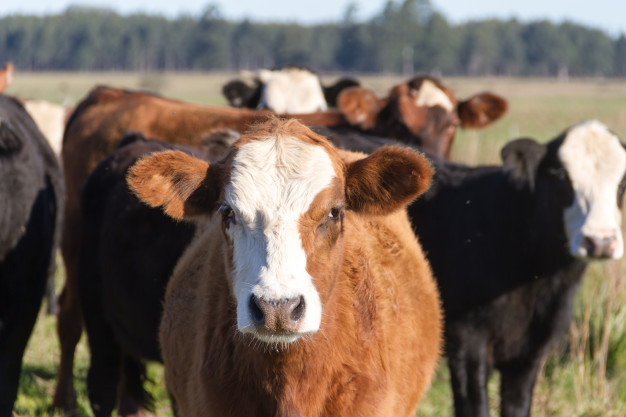In April 2001, the Union Stock Yards, which had operated continuously in San Antonio’s Westside for 112 years, shut its doors. At the height of its operation, more than a million head of cattle moved through the yard annually. Bert Reyes, an auctionioneer at the yards for more than 40 years, told the The New York Times: “We moved from 10-to-15,000 head of cattle a week through here, shipping them out by rail over the country.” The story of this industry is an important part of San Antonio’s Westside story.
In 1889 when the Union Stock Yards opened, San Antonio had but a modest engagement in meat processing and distribution. The yards were ideally located, close to where the Alazan-Apache Creeks converged and near the railroad lines.
The Union Stock Yards served the early needs of large animal feedlots, livestock butchering, and processing of livestock. Originally, the meatpacking plants adjacent to the stock yards were modest in size and served mainly the San Antonio community. With the invention of barbed wire the large ranches closed off the open prairies. In addition, the rapid growth of towns across Texas in the later part of the 19th century caused a demise of cattle drives from Texas to the Midwestern stock yards and meat packing plants.
At the turn of the century San Antonio emerged as a logical meat processing alternative for ranchers from the South Texas region. The newly constructed Missouri Pacific lines enabled ranchers from South Texas, especially from Corpus Christi and Laredo, to increase significantly their shipment of livestock.
The Stockyard District of the Westside of San Antonio also benefited from the rise of new population centers throughout Texas where meat products were in demand. As the railroad industry added refrigerated cars, they made it possible for San Antonio to play a major role in the distribution of meat across the nation.
In the 1920s, large meatpacking companies from the Midwest established plants adjacent to the stockyards in an area southwest of town adjacent to Laredo Street community. Over the next ten years these meatpacking plants doubled the size of their footprint in the Westside, extending from Laredo Street on the north to Pendleton Ave on the South. The location, several miles from the center of the city, was ideal for an industry where thousands of cattle were slaughtered daily.
During the Great Depression years, meatpacking emerged as San Antonio’s largest industry, with more than 1,200 workers and five million dollars in revenue annually. The San Antonio Light noted in 1937 that only the city of Fort Worth surpassed San Antonio in meat processing in Texas. Nearly all of the eight large companies in San Antonio were located in the southwest sector of the city adjacent to Laredo Street and west of Colorado Street.
Joe Bernal, a former Texas State Senator from the Westside, grew up near the meatpacking plants. His father, Jose Maria Bernal, worked in the plants as did many of his neighbors. All the large industrial plants in the city sponsored baseball and basketball teams. It was not uncommon for these plants to recruit workers who had athletic talent. During the 1930s when jobs were scarce, Jose Maria Bernal’s great skills in the game of baseball gave him a edge in finding work. Joe Bernal noted that his dad’s outstanding ability in playing baseball opened many doors for him.
In the 1940s military defense industries emerged as the largest employers of the city, but meatpacking remained a major private industry, preparing more than 100 million pounds of beef, pork and lamb annually. A majority of the workers employed in meatpacking lived in the Westside neighborhoods with many of the workers residing adjacent to the plants.
By the 1950s, dozens of large meatpacking companies operated adjacent to the Union Stock Yards. In the 1960s I had summer jobs with two large companies and saw the industry flourish firsthand. The meatpacking plants—Swift Meats, in particular—paid fair wages, actually some of the highest wages in San Antonio for part-time workers. The work was demanding as we started at 2am and worked an eight hour shift. My job was mainly loading frozen meat, and everyday I went in and out of different freezers and units to fill orders. I learned much about the daily work of the meat packing industries.
Most of the large plants had closed by the year 2000. Several smaller plants remained on Laredo Street and a new generation of small meat packing companies such as Garcia Chorizo and Kiolbassa Smoked Meats emerged. Some of the large companies were driven out of business by the stiff competition, others moved to other states.
Meat packing is far from the glamorous industry that actor Sylvester Stallone made famous in his movie Rocky. Many of the residents nearby were happy to see the plants’ smokestacks gone and with them the strong smells of meat processing. But these plants are also remembered by many families in San Antonio as the major Westside industry that employed thousands of local workers annually.


Recent Comments